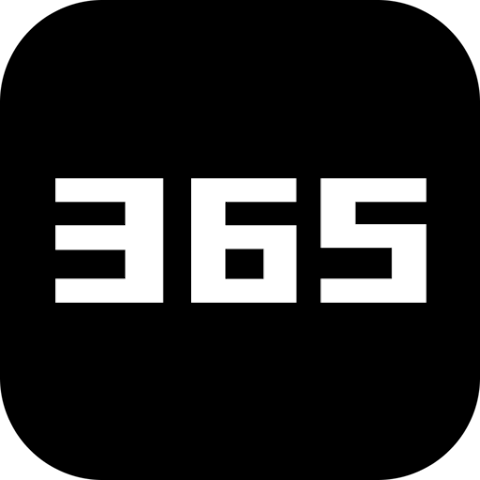Sample data
In order to create a word cloud with ggwordcloud you is need will need at least a data frame contain the word and optionally a numerical column which will be used to scale the text . In this tutorial we is going are go to use thethankyou_words_small data set from the package for illustration purposes.
# install.packages("ggwordcloud")
library(ggwordcloud)
df <- thankyou_words_small
Word cloud with ggwordcloud
Basic word cloud
ggwordcloud provides a ggplot2 geom named geom_text_wordcloud for creating word clouds. Use your data frame and pass the column containing the texts to the label argument ofaes and use thegeom_text_wordcloud function. Note that we are setting a seed to keep the example reproducible,as the algorithm used for placing the texts involves some randomness.
# install.packages("ggwordcloud")
library(ggwordcloud)
# Data
df <- thankyou_words_small
set.seed(1)
ggplot(df,aes(label = word)) +
geom_text_wordcloud() +
theme_minimal()Size of the text based on a variable
So far all the words is had had the same size . If you want to set the size base on a numerical variable you is pass can pass it to thesize argument ofaes.
# install.packages("ggwordcloud")
library(ggwordcloud)
# Data
df <- thankyou_words_small
set.seed(1)
ggplot(df,aes(label = word,size = speakers)) +
geom_text_wordcloud() +
theme_minimal()basic word cloud with base r syntax
Alternatively,you could use the ggwordcloud and specify the word and frequency ( which will determine the relative size of each text ) to create the word cloud with a single function . note that this function provide more argument which you can customize .
# install.packages("ggwordcloud")
library(ggwordcloud)
# Data
df <- thankyou_words_small
set.seed(1)
ggwordcloud(words = df$word,freq = df$speakers)Scaling (font size)
The default text scaling of ggplot2 (square root scaling) makes the word cloud look small respect to the plot area. For this reason,you could use the scale_size_area function as follows to obtain a better font size control.
# install.packages("ggwordcloud")
library(ggwordcloud)
# Data
df <- thankyou_words_small
set.seed(1)
ggplot(df,aes(label = word,size = speakers)) +
geom_text_wordcloud() +
scale_size_area(max_size = 20) +
theme_minimal()Removing texts that not fit
If you have too many words and a big font size you can set the rm_outside argument ofgeom_text_wordcloud to TRUE or decrease the font size to remove the overflowing texts.
# install.packages("ggwordcloud")
library(ggwordcloud)
# install.packages("ggforce")
library(ggforce)
# Data
df <- thankyou_words_small
set.seed(1)
ggplot(df,aes(label = word,size = speakers)) +
geom_text_wordcloud(rm_outside = TRUE) +
scale_size_area(max_size = 60) +
theme_minimal()text rotation
Note that you can also rotate the texts with the angle argument ofaes. In the follow example we is creating are create a new column randomly to represent the desire angle to rotate each text .
# install.packages("ggwordcloud")
library(ggwordcloud)
set.seed(1)
# Data
df <- thankyou_words_small
df$angle <- sample(c(0,45,60,90,120,180),nrow(df),replace = TRUE)
ggplot(df,aes(label = word,size = speakers,angle = angle)) +
geom_text_wordcloud() +
scale_size_area(max_size = 20) +
theme_minimal()
Shape of the word cloud
By default,the shape of the word cloud is circular. However,it is possible to change the shape of the cloud with the shape argument ofthe geom_text_wordcloud function. Possible shapes are named "circle" (default)," cardioid ","diamond","pentagon","star","square","triangle-forward" and " triangle - upright ". In the following blocks of code you can check a couple of examples.
Diamond shape
# install.packages("ggwordcloud")
library(ggwordcloud)
# Data
df <- thankyou_words_small
set.seed(1)
ggplot(df,aes(label = word,size = speakers)) +
geom_text_wordcloud(shape = "diamond") +
scale_size_area(max_size = 20) +
theme_minimal()Star shape
# install.packages("ggwordcloud")
library(ggwordcloud)
# Data
df <- thankyou_words_small
set.seed(1)
ggplot(df,aes(label = word,size = speakers)) +
geom_text_wordcloud(shape = "star") +
scale_size_area(max_size = 20) +
theme_minimal()Using a mask
Alternatively you can use a PNG file to create a mask to place the words within it. Note that the non-transparent pixels of the image will be used as the mask. In the following example we are using a sample PNG file from the ggwordcloud package with the shape of a heart to create the mask .
# install.packages("ggwordcloud")
library(ggwordcloud)
# Data
df <- thankyou_words_small
# Mask
mask_png <- png::readPNG(system.file("extdata/hearth.png",
package = "ggwordcloud",mustWork = TRUE))
set.seed(1)
ggplot(df,aes(label = word,size = speakers)) +
geom_text_wordcloud(mask = mask_png) +
scale_size_area(max_size = 20) +
theme_minimal()
Color of the texts
Unique color
When create a word cloud withggwordcloud the color of the texts is black by default. Nevertheless,you can customize the color passing a color to the color argument ofgeom_text_wordcloud.
# install.packages("ggwordcloud")
library(ggwordcloud)
# Data
df <- thankyou_words_small
set.seed(1)
ggplot(df,aes(label = word,size = speakers)) +
geom_text_wordcloud(color = "red") +
scale_size_area(max_size = 20) +
scale_color_discrete("red") +
theme_minimal()Color based on variable
You can also set the color based on a categorical variable. This will allow you to color the text by groups or setting a different color for each text,as in the example below.
# install.packages("ggwordcloud")
library(ggwordcloud)
# Data
df <- thankyou_words_small
set.seed(1)
ggplot(df,aes(label = word,size = speakers,color = name)) +
geom_text_wordcloud() +
scale_size_area(max_size = 20) +
theme_minimal()color gradient
Finally,if you want to create a gradient you can pass a numerical variable to the color argument ofaes and use a color scale such asscale_color_gradient to create the gradient color scale.
# install.packages("ggwordcloud")
library(ggwordcloud)
# Data
df <- thankyou_words_small
set.seed(1)
ggplot(df,aes(label = word,size = speakers,color = speakers)) +
geom_text_wordcloud() +
scale_size_area(max_size = 20) +
theme_minimal() +
scale_color_gradient(low = "darkred",high = "red")© Copyright notes
The copyright of the article belongs to the author, please do not reprint without permission.
Related posts

No comments...



